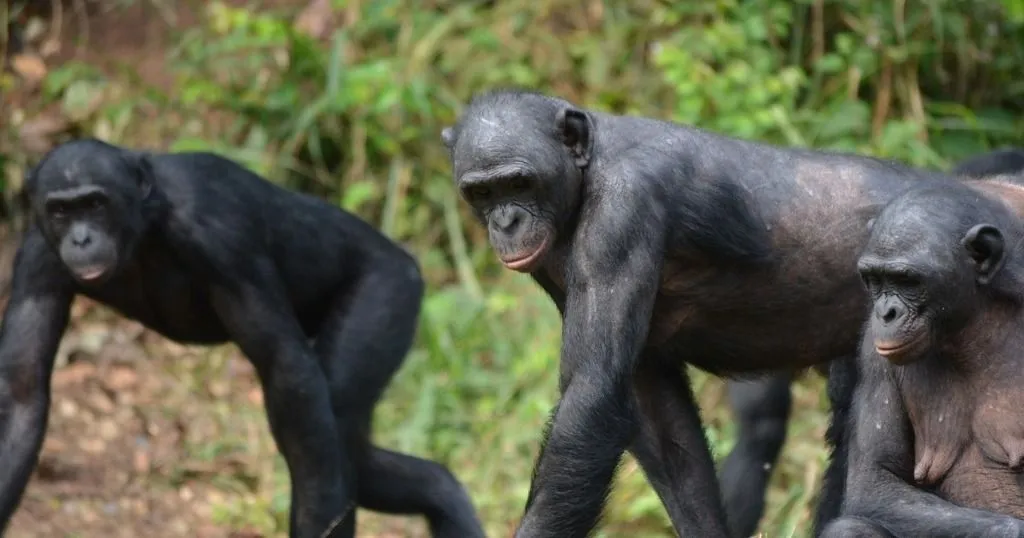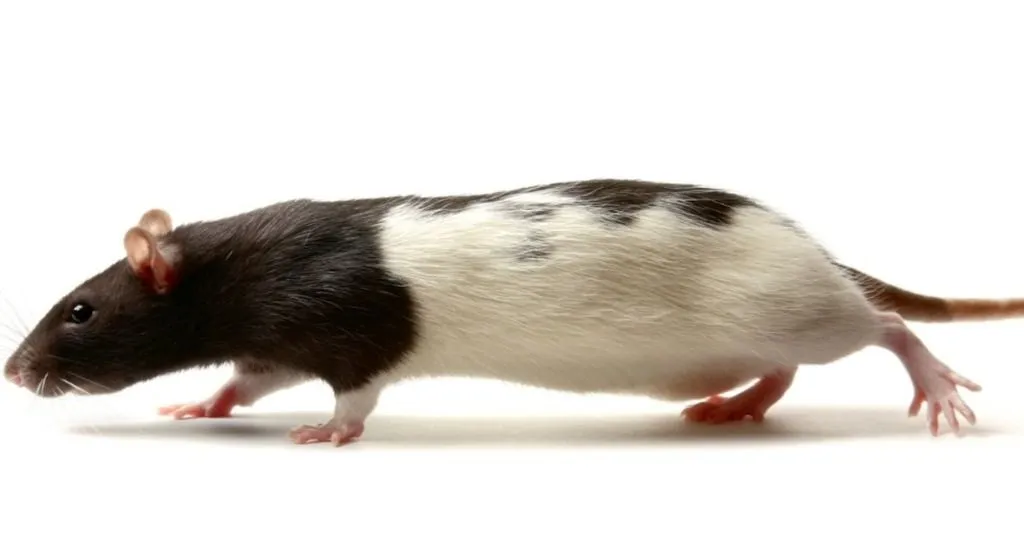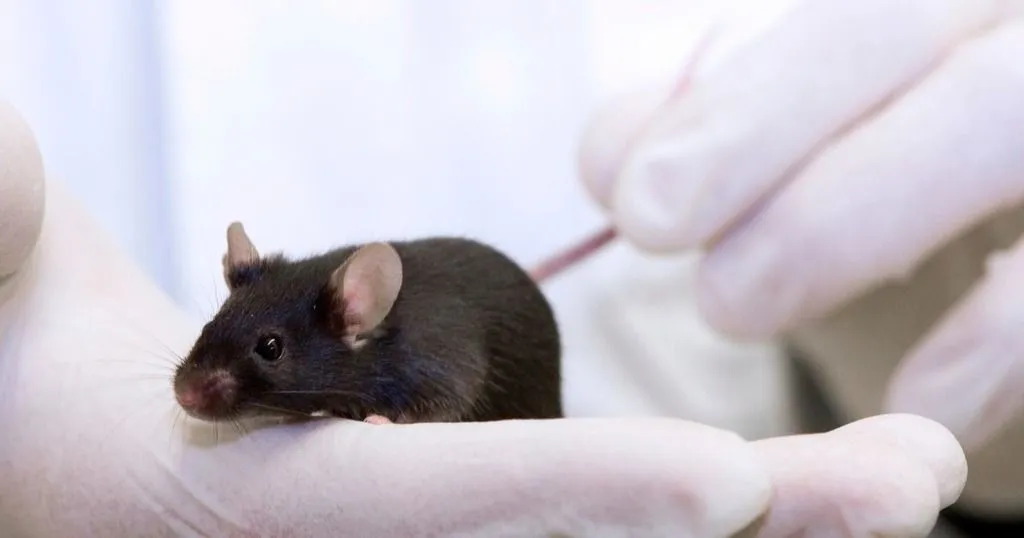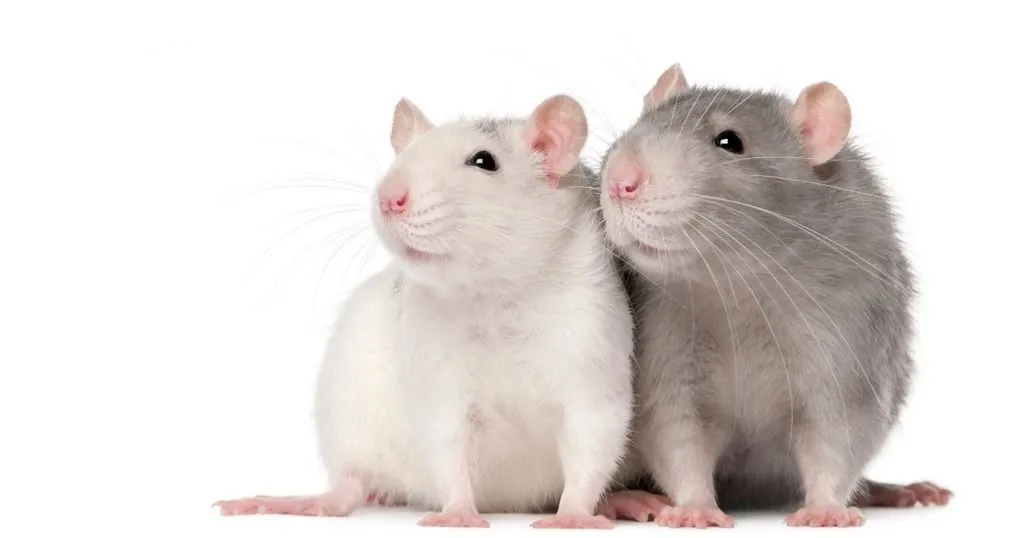Bonobos not always as tolerant as generally believed: the plot thickens…
In Planckendael Wild Animal Park (Belgium), researchers have been observing a group of bonobos and have found that the differences between chimpanzees and bonobos are not always as black and white as generally believed.
Posted by
Published on
Thu 04 Jun. 2015
Topics

A guest blog post by Jeroen MG Stevens & Katherine A Cronin
Bonobos (Pan paniscus) are the least well known of the great apes, discovered only in 1929. Often they are contrasted with their closest relatives: the chimpanzees. In a common dichotomous view, chimpanzees are portrayed as brutal, aggressive, and demonic, while bonobos are portrayed as nice, peaceful, and hedonistic.
Bonobos and chimpanzees
In Planckendael Wild Animal Park (Belgium), researchers have been observing a group of bonobos for twenty years and have found that the differences between chimpanzees and bonobos are not always so black and white. Previous experiments have shown that when it comes to food sharing, bonobos are not always more tolerant than chimpanzees (Jaeggi et al., 2010).
Recently scientific interest for tolerance has increased since it is believed to be important factor in human evolution, as it has been shown that tolerance is linked to the evolution of social learning, cooperation, prosociality, and fairness in non-human primates and humans.
Social tolerance
In a recent experiment the Planckendael researchers teamed up with Katherine Cronin, now at Lincoln Park Zoo, who had conducted a nice set of experiments on chimpanzees in a sanctuary in Zambia (Cronin et al., 2014). There, four groups of chimpanzees were provided with peanuts to measure how tolerant they are. The number of peanuts and the surface area that they cover was scaled by group size, and the proportion of the group that simultaneously occupies the resource zone was measured as an indicator of social tolerance.
This research had the advantage that differences in group size could be controlled for, and allow the researchers to compare tolerance across different social groups. The results show that tolerance differed between the chimpanzee groups. The question now was: where would bonobos fit in this story?
The peanut plot
For Planckendael, the design was slightly modified. We worked with a peanut plot: a dedicated place in the bonobo outdoor enclosure of about 1.6m² where, prior to the actual experiment, 12 peanuts per bonobo were distributed to teach the bonobos that food could be found here.
During the experiment, we distributed peanuts in three periods of five days. In the first five days we just distributed the peanuts in the plot. In the next five days we added leaf litter to make the peanuts more difficult to obtain and encourage the bonobos to stay in the plot longer. Finally we returned to the original state without leaves.
The behavior of the bonobos was videotaped and later analyzed with The Observer, following an ethogram developed in Planckendael. We recorded which individuals were in the plot, and whether aggression and/or affiliative behaviors occurred between them.
Grab and run
We found that overall the bonobos were less tolerant than the chimpanzees in the previous study. Three of the eight bonobos never entered the resource zone. Moreover, most of the individuals that did go in the resource zone quickly left after the first 15 seconds.
Basically, most of the bonobos used a “grab and run” strategy and quickly gathered as much of the peanuts as they could and ate them outside the plot. Only the group’s alpha female remained seated inside the plot. When leaf litter was introduced, the bonobos did stay in the plot a bit longer, but once the leaves were removed the bonobos quickly returned to their old strategy.
Apparently, the bonobos preferred to eat the peanuts far away from other members of their social group, unlike the chimpanzees.
Further research
While this research showed us that bonobos are not necessarily more tolerant than chimpanzees, the group studied here was relatively small. We plan to repeat the experiment in larger groups to see how bonobo groups of different sizes respond to the challenges of the peanut plot. These additional groups will also be essential to understanding whether there is a real difference between species.
References
- Cronin, K.A.; De Groot, E.; Stevens, J.M.G. (2015). Bonobos Show Limited Social Tolerance in a Group Setting: A Comparison with Chimpanzees and a Test of the Relational Model. Folia Primatologica, 86, 164–177.
- Jaeggi, A.V.; Stevens, J.M.G.; Schaik, C.P. van (2010). Tolerant food sharing and reciprocity is precluded by despotism among bonobos but not chimpanzees. American Journal of Physical Anthropology, 143, 41–51.
- Cronin, K.A.; Leeuwen, E.J.C. van; Vreeman, V.; Haun, D.B.M. (2014). Population-level variability in the social climates of four chimpanzee societies. Evolution and Human Behavior, 35, 389–396.
Related Posts

(Un)social rats: the role of dopamine and the amygdala in social adversity

How an internal clock gene can alter innate behaviors in mice

